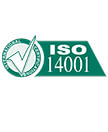The past few decades have witnessed amazing advancement in technology, especially in the field of electronics. Despite the remarkable facilities offered by these advances, they have given birth to a new type of hazardous waste, called e-waste. E-waste refers to the consumer electronics that are discarded or are useless. These discarded items contain numerous toxic wastes and are growing rapidly in our surroundings.
E-Waste and Its Sources
Electronic waste, or e-waste, is any broken or unwanted electronic device or appliance; sometimes, it is also called WEEE- waste from electrical and electronic equipment. Discarded computers, monitors, televisions, printers, scanners, fax machines, mice, keyboards, CD players, digital cameras, walkie-talkies and cell phones form the major chunk of e-wastes.
It has been estimated that around 50 million tons of electronic products are discarded annually around the world. Most of the electronic wastes are produced by developed nations, which are later exported to developing countries for disposal. Since the government regulations are either absent or are not enforced in these third world countries, the used electronic products are often easily accessible to general public, who are exposed to health hazards associated with e-wastes.
Hazardous Impacts of E-Wastes
The primary concern with e-wastes is the hazardous content they carry. Studies indicate that more than 1000 chemicals including chlorinated solvents, PVC plastics and various types of gases are used for manufacturing of electronic products and their components. For instance, computer monitors, typically contains 4 to 8 pounds of lead, a heavy metal known for causing brain damage among children.
Similar to monitors, flat panel TVs contain large amounts of mercury, which is a proven carcinogenic. Switches and batteries contain cadmium and nickel, which are toxic for humans, animals and plants. Metal housing and joints, often coated with chromium corrosion protector, cause toxicity in liver and kidney. Similarly, beryllium dust generated from relays, connectors and motherboards are highly toxic for humans when inhaled.
Recycling of E-Wastes
The waste management of electronic appliances is complicated, primarily because most of the countries are not able to recycle more than 20 percent of the e-waste they generate. The leading reason for this low rate of recycling is the lack of information and initiative on part of the consumers. In addition, in many parts of the world, tons of electronic waste is discarded in illegal dump sites, where no waste monitoring system exists.
Controlling Hazardous E-Wastes
E-waste represents one of the most heterogeneous mixtures of the waste categories. Increasing at an insurmountable rate, e-wastes pose serious health hazards to humans and wild life. Consumer awareness and commitment are imperative for controlling the problem. Technological advances such as clean computers and appliances are also beneficial since they can address the problem at root.






